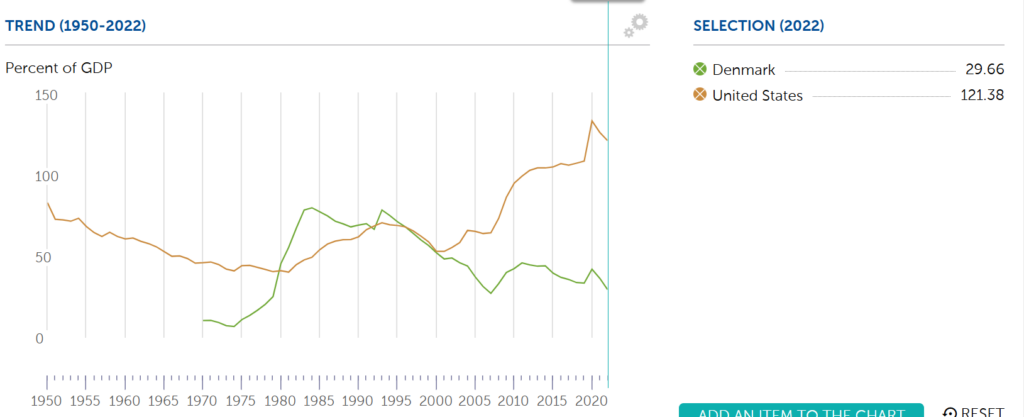Listen to this podcast episode on Spotify!
Hello and welcome to another episode of the Finrestra podcast! I’m Jan Musschoot.
Summer is almost over, but I wanna start September with some economic thoughts inspired by my vacation in Denmark.
One of the things I noticed during my week in Copenhagen was the vast number of American tourists. For example, I went on a guided walking tour through the city center, and almost everyone in the group was American, and more specifically Californian. In restaurants, we frequently sat next to Americans. It’s remarkable when you think about it—flying from the US to Copenhagen, and especially from the West Coast, takes about ten hours. Meanwhile, there are like 500 million potential tourists in Europe who are much closer. For me, it was just a one hour flight.
So why are there so many Americans in Copenhagen relative to Europeans? Although Copenhagen is a beautiful city, Denmark is quite expensive, so many European tourists prefer cheaper options. On the other hand, I know there are also lots of Americans in places like Portugal, France and Italy.
So going on vacation in Europe must be quite cheap to Americans. And the real question is:
Why are Americans richer than Europeans (on average)?
Strong dollar?
When you think about tourism, one obvious explanation is the exchange rate. A strong dollar against the euro means Americans can buy more euros, making Europe relatively cheaper. While this sounds like a reasonable explanation, the five-year exchange rate between the dollar and the euro doesn’t support this. There was a period in 2022 when the euro was weak, but today, the exchange rate is similar to pre-pandemic levels in 2019.

So, this isn’t the main reason for the large number of American tourists. And if you’re thinking, hold on, Denmark isn’t in the eurozone and uses the Danish krone, the Danish National Bank keeps the exchange rate between the euro and the crown fixed.
However, a strong dollar can influence tourism. The Japanese yen has weakened significantly compared to the dollar. I wouldn’t be surprised if more Americans are visiting Japan now because their dollars go much further there.

So, if the exchange rate isn’t the reason why Americans are richer, what is? Because regardless of the metric—whether it’s GDP per capita, purchasing power parity, or other indicators—Americans are indeed richer than Europeans on average.
Lower taxes
One major factor contributing to this wealth difference is higher deficits and lower taxes in the U.S.. In the U.S., government deficits have been high since the financial crisis of 2008, leading to a government debt-to-GDP ratio above 120%. In contrast, Denmark has a public debt ratio below 30%, thanks to high taxes and small deficits or even budget surpluses.

While Denmark invests heavily in public infrastructure, one of the reasons why it’s such a nice place to visit, this spending is funded by taxes rather than debt. Meanwhile, in the U.S., people benefit from lower taxes, leading to higher incomes.
If Denmark borrowed more and ran budget deficits instead of surpluses, people would have more money to spend, save, or invest, benefiting the Danish and European economy. Lower taxes on income or consumption would give people more disposable income, allowing them to make investments, improve their homes, or travel more—just like many Americans do.
OK, that’s it for this week’s episode. I’ll do another one about Denmark later, because I haven’t said anything about its biggest company yet.
This episode is not sponsored by Danish Tourism, but if you visit Copenhagen, I highly recommend you buy a Copenhagen card.
